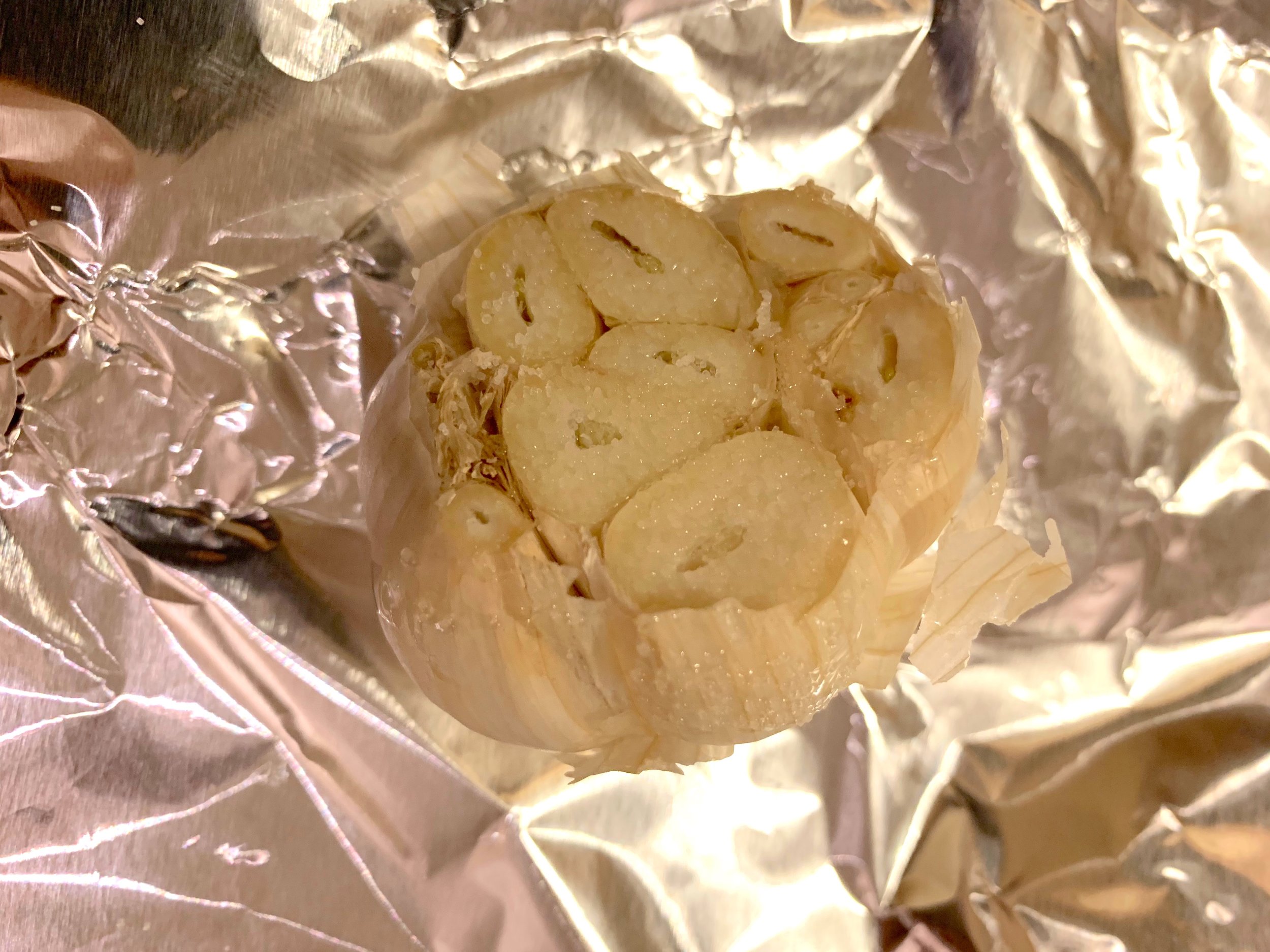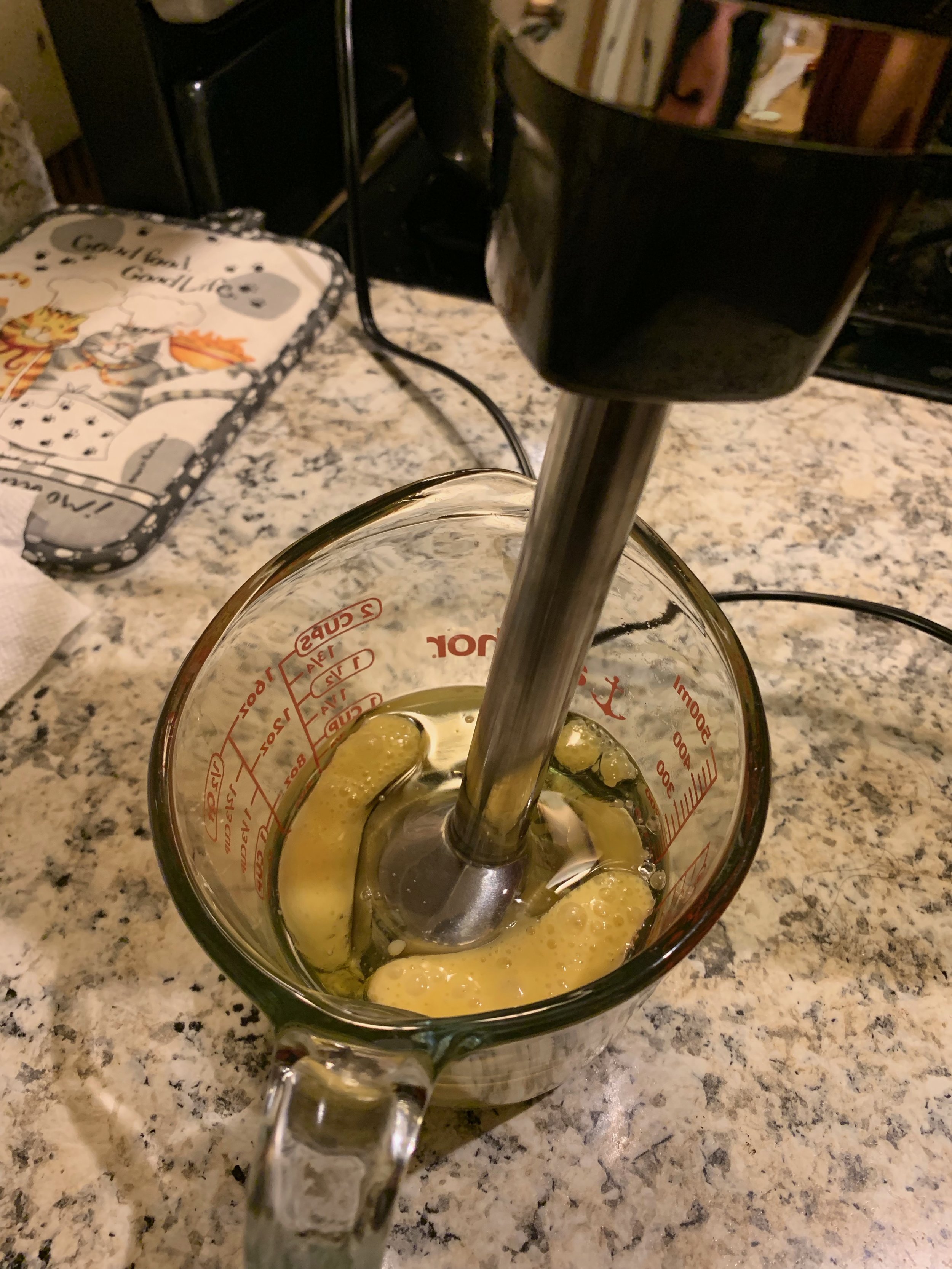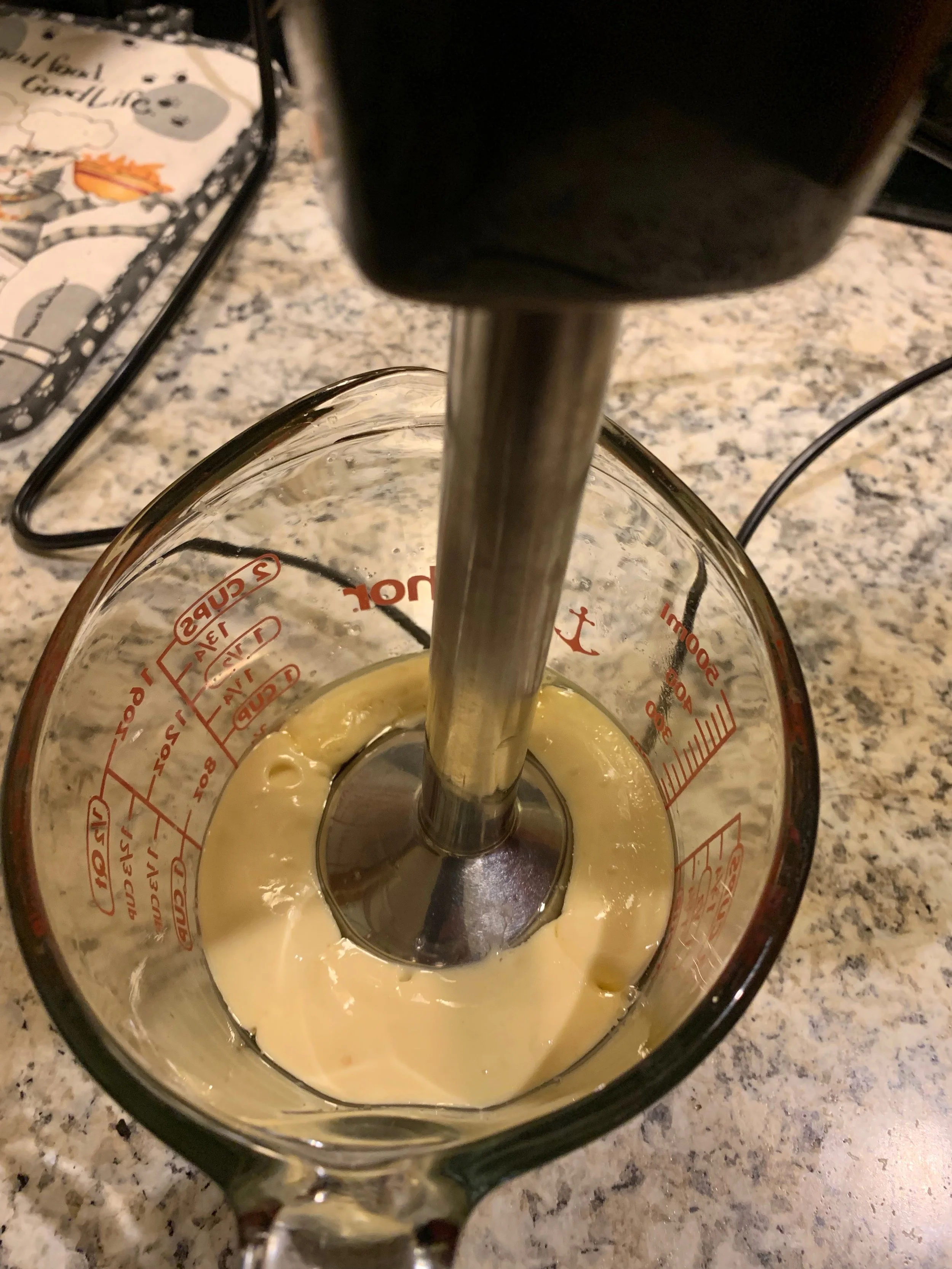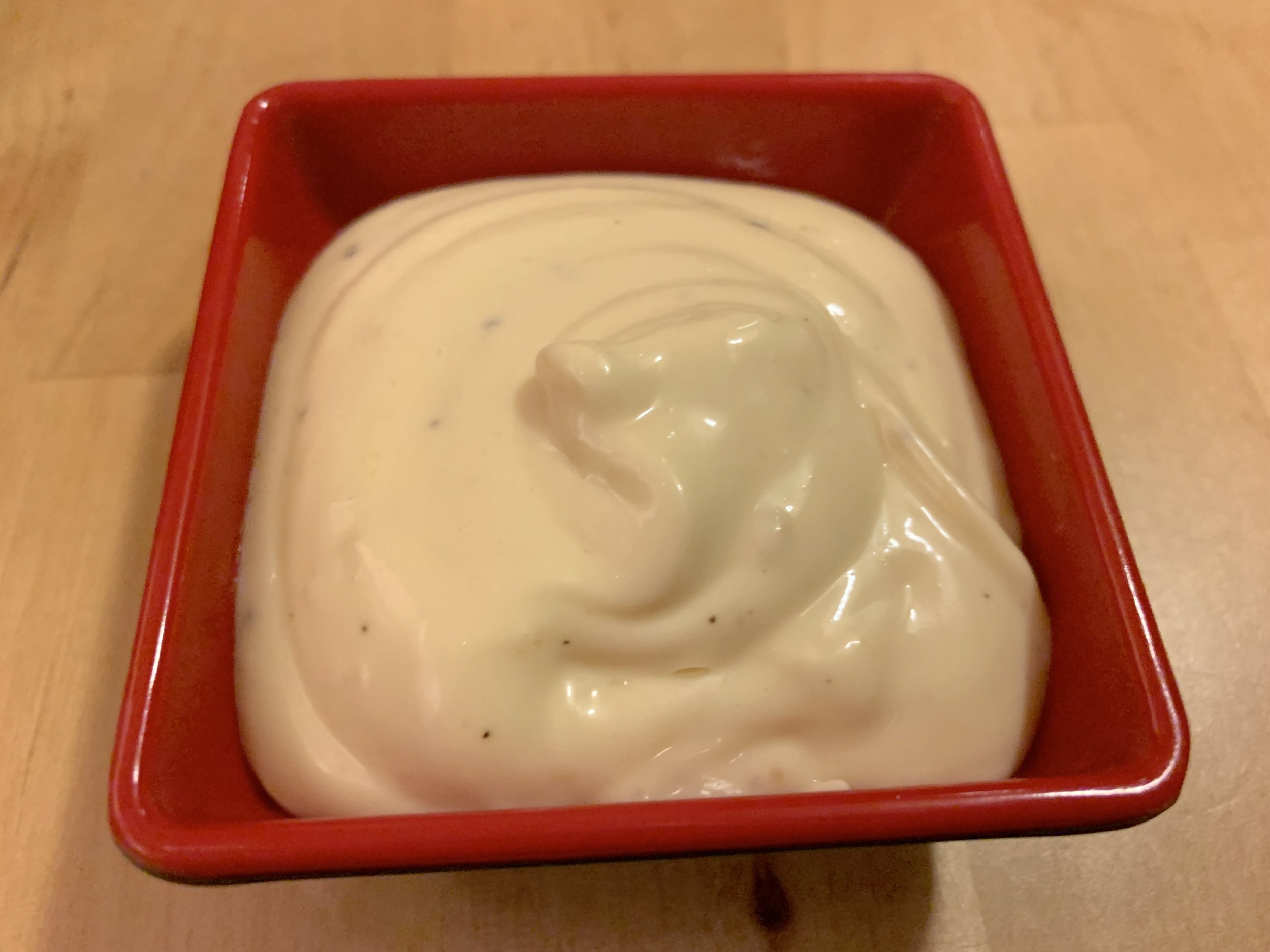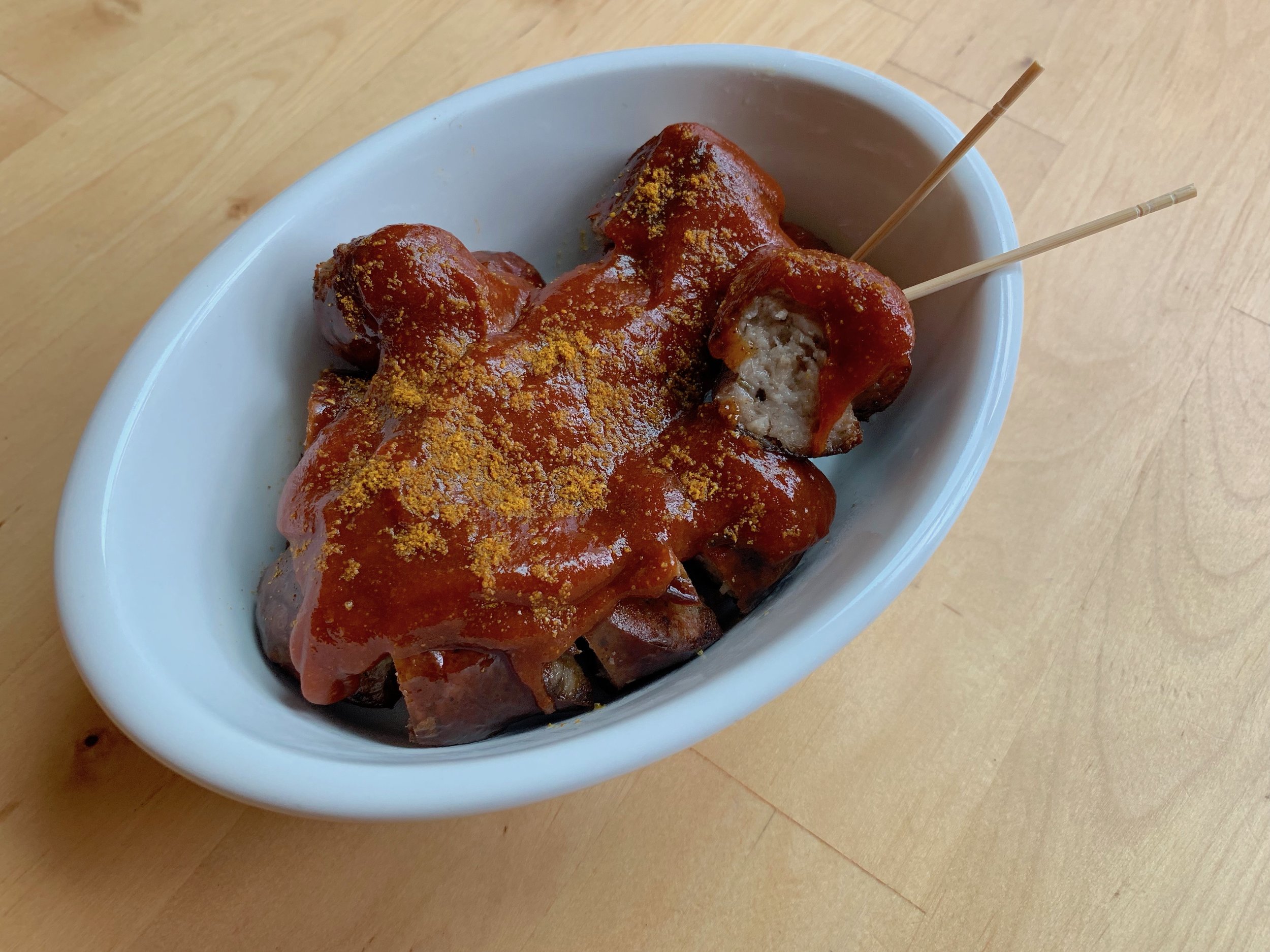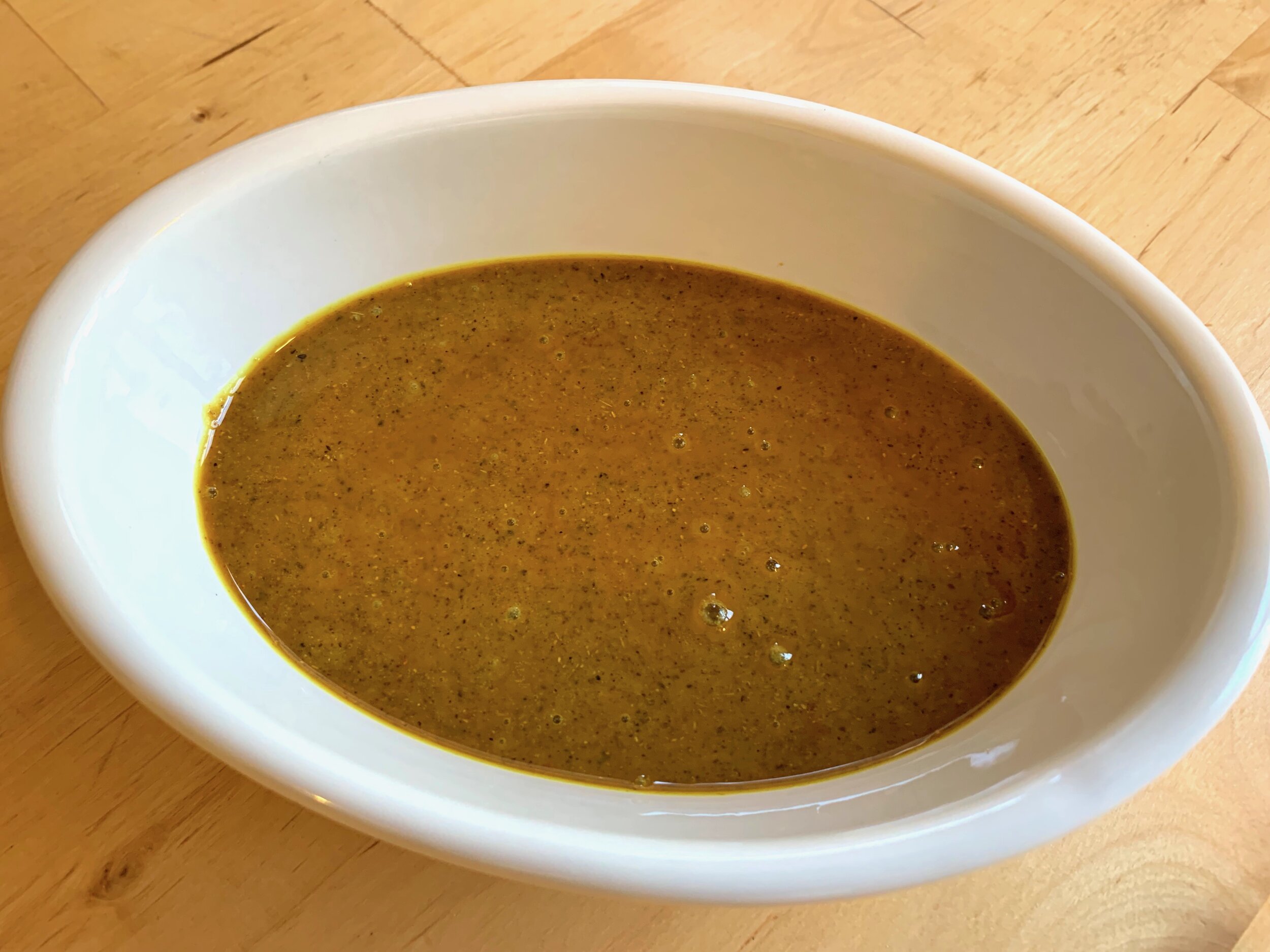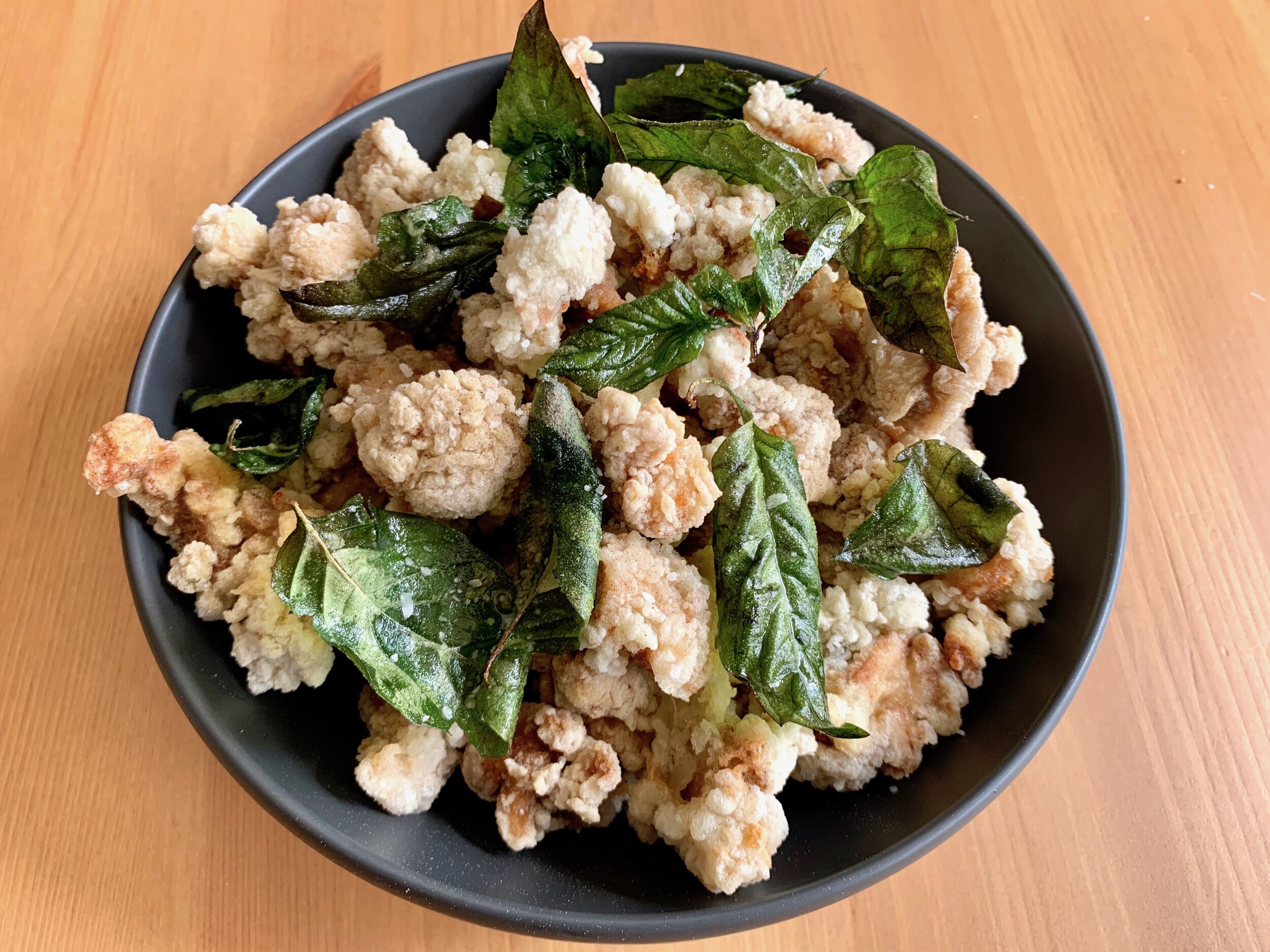Roasted Garlic Aioli

A rich sauce made of garlic and olive oil, aioli has its roots in Occitan cuisine [1], and is now a common feature of many Western Mediterranean cuisines, including those of Catalonia, Provence, Sicily, and Calabria. It is no coincidence that these regions fall into Occitania, a historic region encompassing Southern France, parts of Northern Italy, and Western Spain, which shares cultural and linguistic roots going back to Roman times.
The extent of the Duchy of Aquitaine in 806 CE, spanning Southern France and parts of modern-day Spain and Italy.
The Romans conquered and colonized the Mediterranean coast of France decades before Caesar’s conquest of Gaul. As a result, Mediterranean France, encompassed by the two Roman provinces of Aquitania and Provinicia Romana (Provence), developed its own cultural identity within the empire. The fall of Rome plunged Western Europe into the Dark Ages, but the Duchy of Aquitaine emerged in this era as one of the political powerhouses of the continent. From 600 CE onwards, the Dukes and Duchesses of Aquitaine wielded great influence as a quasi-independent sub-kingdom of first the Carolingian Empire, and then France. The marriage of Elanor of Aquitaine to King Henry II of England made their heirs simultaneously Kings of England and Dukes of Aquitaine, answerable to the Kings of France in their continental holdings [2]. This uneasy political arrangement could never last, and was finally destroyed in the Hundred Years’ War, a brutal conflict between England and France which ended with the dissolution of Aquitaine and direct French royal rule of the region. [3] The Duchy was broken up into individual provinces and the Occitan language was officially suppressed. However, the heritage and culture of the region survived in its food.
In its purest form, aioli consists of just garlic, olive oil, and salt. However, most modern versions incorporate egg as an emulsifier, resulting in a creamier, mayonnaise-like texture. Roasted garlic gives this aioli a milder and sweeter flavor than a fresh garlic aioli. It is a great sandwich spread, and can also be used as a sauce for seafood and steak, or a dip for asparagus and fries.
Ingredients
1 bulb of garlic
1 egg
1 cup olive oil
1 tbsp lemon juice
1 tsp Dijon mustard
1 tsp vegetable oil
Salt to taste
Black pepper to taste
Let’s start by roasting the garlic. Raw garlic derives its characteristically pungent aroma from allicin, an organic sulfur compound generated when the cells in garlic are damaged. [4] Roasting destroys these enzymes, making cooked garlic much milder than raw garlic. Additionally, some of the starch in the garlic clove is broken down into sugar. Together, these processes result in a sweet, nutty, aromatic flavor very distinct from that of raw garlic.
Preheat the oven to 425° F. While the oven is heating, cut the top off of the bulb of garlic to expose the individual cloves of garlic. Drizzle this surface with vegetable oil, and liberally salt the garlic. Wrap the bulb tightly in aluminum foil, place on a sheet pan, and roast for 40 minutes, or until the garlic has softened. When the garlic is cool enough to handle, remove the garlic from its skin by gently squeeze out the individual cloves. They should be soft, and will release easily.
With the garlic is done, it is time to talk emulsion. Like mayonnaise and Hollandaise sauce, aioli is a mixture of oil and water—two liquids which are immiscible. Tiny drops of oil are suspended in a solution of water, an inherently unstable state of affairs. Were the solution to reach thermodynamic equilibrium, oil and water would segregate into distinct phases—a layer of oil and a layer of water. In cooking, this phase separation is known as “splitting” or “breaking,” an unappetizing oil slick floating over a mess of a sauce.
How do we avoid this fate? We will employ several tricks in our fight against entropy. The first is to work the oil in gradually, as it is easier to get a small amount of oil in suspension. The second is to impart a great deal of energy, which we will do by mixing. The third is to add emulsifiers—compounds which improve the kinetic stability of an emulsion. The most common type of emulsifier is a chemical known as a surfactant, a molecule with a polar or hydrophilic part and a non-polar hydrophobic part. These chemicals help hold the oil droplets in the water, preventing them from phase separating. We will be employing two natural emulsifiers in this recipe: egg yolk, which contains the emulsifying protein lecithin, and mustard, which contains a set of emulsifiers from its seed coating.
The oil we use contributes a great deal to the flavor of the aioli, so it’s time to break out the good stuff. Go with the highest quality olive oil you have—a cold-pressed extra virgin olive oil if possible.
If you are making the aioli with a blender or by hand with a whisk, combine the egg, roasted garlic, lemon juice, and Dijon mustard in the blender or a bowl, and mix until uniform. Then, mixing constantly, slowly drizzle the oil into the aioli. Continue adding the oil until the aioli comes together, becoming thick and creamy in texture. You will not necessarily use the full cup of oil—judge when to stop by texture, not by volume. If you add too much oil too quickly, or don’t mix enough, the aioli will split, so be patient.
If you have an immersion blender, forming the emulsion is much easier, because an immersion blender gives you the ability to impart a great deal of force in a localized volume. In a sturdy, tall cup capable of withstanding the blender (a Pyrex measuring cup works well), add the garlic, egg, lemon juice, and Dijon mustard. Then pour over about half a cup of the olive oil. The oil will form a layer above the other ingredients.
Place the head of the immersion blender at the bottom of the cup, amongst the water soluble ingredients. Because the layer of oil sits above the other ingredients, and the blending is occurring at the bottom of the cup, the blender will draw only the oil it can take into the emulsion. Switch the blender on, keeping it at the bottom of the cup, and blend. As the oil gets integrated, gradually tilt the blender to incorporate more and more oil. Once a stable emulsion is formed, add the remaining oil in quarter-cup intervals. Continue blending until the aioli reaches the desired consistency.
If your aioli does break, not all is lost. Try removing the separated oil from the top, adding either an egg yolk or additional mustard for additional emulsifying power, and then mix again, slowly drizzling new oil in, forming a fresh emulsion. A spoonful of cream also can help stabilize the emulsion.
Season the aioli with salt and black pepper to taste, and serve immediately, or store in a sealed container in the refrigerator for up to 2 weeks.
Substitutions
If you want a punchier garlic flavor, use two bulbs of roasted garlic rather than one, or add a clove of roughly chopped raw garlic. Herbs like mint or tarragon are also a welcome additions to the aioli—chop them finely and mix them into the sauce after it has been emulsified.
[1] The word aioli is derived from the Occitan “alhòli,” which translates to “garlic oil.”
[2] Elanor of Aquitaine (1122-1204 CE), Duchess of Aquitaine in her own right, was also the matron of the House of Plantagenet, the so-called Angevin Kings of England.
[3] The Hundred Years’ War was fought from 1337 to 1453 CE. The conflict spanned five generations of monarchs, and the war forged the national identities of both England and France.
[4] Allicin is generated when the garlic cells are breached, allowing the enzyme alliinase to come into contact with the stable sulfur compound alliin, a derivative of the amino acid cysteine. Allicin repels pests, and also has antibacterial properties.
Recipe
Prep Time: 5 min Cook Time: 40 min Total Time: 1 hr
(+15 min inactive)
Difficulty: 3/5
Heat Sources: oven
Equipment: sheet pan, aluminum foil, immersion blender, blender, or whisk
Servings: 1 cup
Ingredients
1 bulb of garlic
1 egg
1 cup olive oil
1 tbsp lemon juice
1 tsp Dijon mustard
1 tsp vegetable oil
Salt to taste
Black pepper to taste
Instructions
1. Preheat the oven to 425° F. Cut the top off of the garlic bulb to expose the cloves. Drizzle with vegetable oil, and sprinkle with salt. Wrap the garlic bulb tightly in aluminum foil, and roast for 40 minutes. Let cool, then remove the roasted garlic from its skin.
2. If using an immersion blender, place the roasted garlic, cracked egg, lemon juice, and mustard in a sturdy cup. Pour ½ a cup of olive oil into the cup. Place the head of the immersion blender at the bottom of the cup, and blend. As the emulsification forms, occasionally tilt the blender to incorporate more oil. Once the oil is incorporated, slowly add the remaining oil to the mixture, blending until the aioli reaches a creamy consistency.
3. If using a blender or whisk, mix the roasted garlic, egg, lemon juice, and mustard until well combined. Then slowly drip in the olive oil, mixing constantly to emulsify the oil. Continue mixing until the aioli reaches a creamy consistency.
4. Season with salt and pepper to taste. Serve immediately, or store in a sealed container in the refrigerator for up to 2 weeks.


